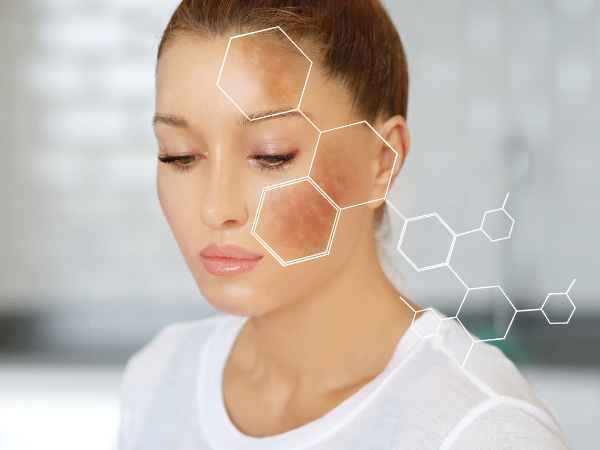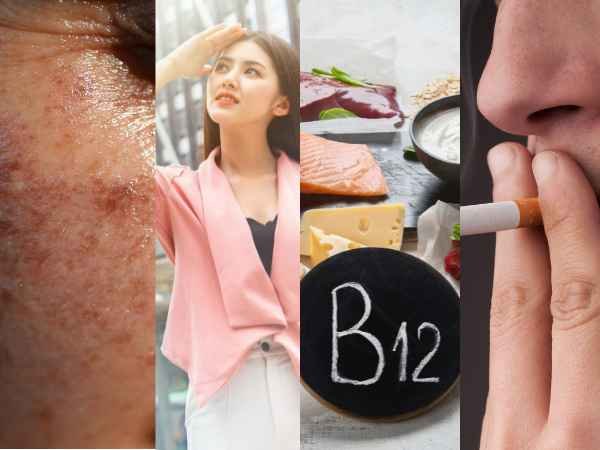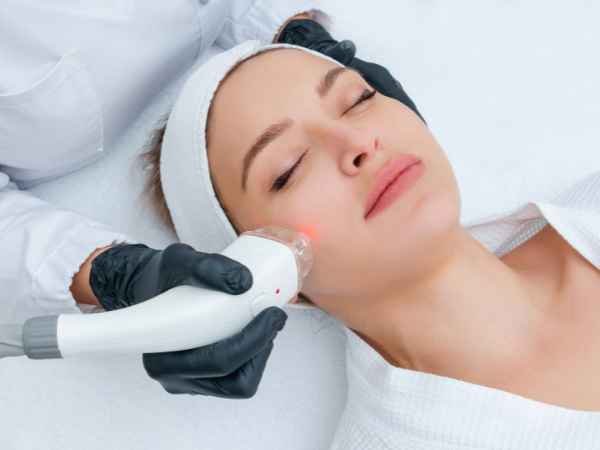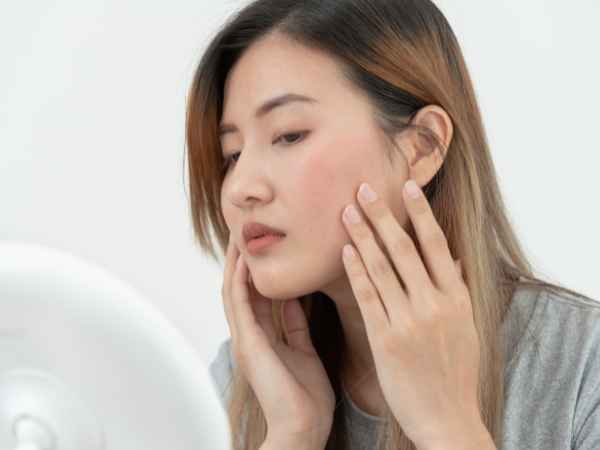How to Remove White Patches on the Face: The Overview
Leukoderma, commonly known as white patches on the face, are mere patches in the skin that have no pigment due to various underlying reasons. The patches could be in small spots to larger areas. Usually, they raise concerns and may capture attention due to their difference in color from the skin surrounding it. Some of the familiar causes include conditions like vitiligo, fungal morphes, and nutrient deficiencies as they interfere with the normal production or distribution of melanin, the substance imparting color to skin.

As per the research published in the Journal of the American Academy of Dermatology, vitiligo, which primarily forms part of the general cases being presented in clinics, actually affects about 1 to 2 percent of the total world population, making it one of the most common pigmentation disorders globally. In tis article we will talk about how to remove white patches on face.
What are the Causes of White Patches on the Face?

The question most likely on your mind is how to remove white patches on face and bring back your skin into its healthiest and most beautiful possible state. White patches on the face can be caused due to different reasons – medical or lifestyle. The main reason why these patches form is the change in the natural pigment of skin called melanin. Following are the various causes of this condition, explained in simple terms:
Understanding the Skin Conditions
Vitiligo: Vitiligo is an autoimmune condition in which the immune system of the body destroys melanocyte cells responsible for producing skin pigments, resulting in the loss of pigmentation in some areas of the skin. This can develop into white patches, which will spread to other sides of the body with time. Although not harmful to health, it may create some psychological problems such as effecting an individual’s personality and confidence.

- Tinea Versicolor: The fluid in the form of patches that form on the skin is known to be of fungal nature, which tends to either have a lighter or dark pigmentation than the actual skin color. This is common during the hot, humid times of the year but can also at times be slightly itchy.
- Eczema and Psoriasis: These skin disorders are marked by inflammation and irritation; in some instances, the affected places are likely to show lighter areas of skin, resulting from the loss of pigmentation during healing.
- Idiopathic Guttate Hypomelanosis (IGH): IGH is most commonly observed because people grow old. It manifests itself with the appearance of small white spots, especially on sun-exposed areas such as the face, arms, and legs. The exact reasons for the appearance remain unclear, but it is associated with chronic sun exposure and aging.
Bad Environmental Conditions
- Too Much Exposure to UV Rays: Excessive no sunscreens spending time in UV rays-asped. It injures the skin by developing white patches and damage to radiation interferes with melanin production, which can lead to uneven skin tone or permanent discolouration.
- Harsh Chemicals Found in Cosmetics: These types of beauty products had some in them, which manifest strong agents irritating the skin or stripping its natural oils and pigments. It can also lead to white patches on a person’s skin, even more so while using products.
- Pollution As an Influencing Factor: Pollution can weaken and damage the skin’s barrier as well, leading to a building block position in that skin. There are toxins that another cause may cause discolouration. With time, such damage can appear in white or dull patches on the face.
Here are some: Deficiencies Nutritional

- Vitamin B12, Zinc and Copper Deficiency: These three nutrients are vital for skin function, and their deficiency causes disturbance in the formation of melanin in the skin inducing white pots. For example, a deficiency of vitamin B12 is also associated with pigmentation disturbances.
- Malabsorption of Protein: Yours may not digest protein properly in the body, which may result in the entire skin being adversely affected, particularly the melanin system, leading to white patches.
Lifestyle Factors
- Smoking: Smoking deprives the skin of both blood flow and hence oxygen as well as nutrients. This, in turn, may affect melanin production, thus predisposing someone to have white patches.
- Chronic Stress: Stress alters the levels of hormone secretions in your body; the cells associated with pigmentation have an increased likelihood of having their normal functioning disturbed by such hormones.
Types of White Patches on the Face
There are usually several variations of white patches on the face depending on its classification and diffusion. With its differences, it could help identify the cause and aid in determining the treatment.
Permanent or Temporary White Patches:
- White Permanent Patches: Certain patches can be permanent and remain indefinitely without going away or being treated with a home remedy. This usually results from illnesses like vitiligo or idiopathic guttate hypomelanosis (IGH), where skin loses its production of the pigment, melanin, responsible for skin color. Treatment can be useful for managing these patches; however, complete reversal may not be possible in every case.
- White Temporary Patches: Temporary patches would typically be as a result of fungal infections (such as tinea versicolor), eczemas, or sunburn. Most of these can be treated by using medication, skincare, or change in routine. After that, the skin tends to return slowly to its usual color.
Localized vs. Generalized White Patches
- Localized White Patches: Same as localized, limited to some part of the body or the face. For instance, a fungal infection may cause a localized small white patch on the face, or, if there is an injury causing a white spot on the skin, it is also considered localized. Because these patches affect a smaller area, they tend to be treated easier than others.
- Generalized White Patches: Generalized patches are those which spread all over the body. Vitiligo is one of the best examples of how a body whitepatch ends up with multiple spots on a person’s body; it results from the emerging immune system which ends up affecting the production of pigments in the concerned areas. This would need a larger extent of treatment, which is long as well.
Face White Patches Treatment
The treatment for the white patches on the face entirely depends on their cause and extent. Given below are very simple and common treatment options available:
Medical Treatment
- Evaluates Normal-Temporal Steroid and Creams: Such creams are usually a prescription course as they calm the irritated skin and aid the natural color restoration process. For many cases, steroid creams, when used according to recommendations, become very helpful. For instance, in patients with vitiligo, up to 70% of them will restore color through studies. Daily application of sunscreen is one best ideal inputs to how to remove white patches on face as well as protect the skin from damage by the sun.
- Phototherapy: This method employs special lights to rapidly stimulate the skin to produce pigment. It has proven beneficial particularly among larger patches. Fifty-two percent of patients are found to have great improvement concerning it, with frequent applications.
- Immunomodulators: These are unique creams like tacrolimus or pimecrolimus that target hyper-kicked immune responses with gentle effects even for sensitive body areas like the face and for use in autoimmune-caused white patches.
Natural ways
- Aloe Vera: Indeed, it is an excellent natural remedy for reducing the redness and irritation of the skin and for promoting healing of the skin. This is very simple in application and is proven over time to help with pigmentation.
- Neem and Turmeric: Oldest medications: neem and turmeric. They are highly skin-friendly. Neem fights infections while turmeric helps brightening the skin and reducing inflammations. Both are very simple, natural options for experimentation at home.
- Coconut Oil: Moisturizes the skin to alleviate dryness and itching; creates an excellent scenario for healing the skin.
Nutrition and Supplementation
Consume Food that Narrows the Skin
Include fruits such oranges or vitamin-rich vegetables like almonds. They will take care of the skin and heal it faster.
- Iron and Zinc: These minerals can be obtained from spinach, and nuts – foods that are important for healthy skin among many others. Zinc helps in repairing the damaged skin cells.
- Hydration: Water intake is one of the easiest yet effective ways in maintaining skin wellness. It will keep the skin fresh, supple, and ready to repair itself.
- Homeopathic Approaches: Some people use Arsenicum Album or Silicea for white patches; although there is yet no scientific evidence for its efficacy, many believe in its effectiveness in mild forms.
The treatment for white patches requires time and the correct treatment method; therefore, it should be initiated with small steps, such as using a natural remedy or changing the diet, and consult for further advice if needed. And in time, with care and patience, skin conditions can improve!
Myths About White Patches on Mouth
White patches on the face often shade their own misconceptions, which lead to much confusion and an ineffective treatment of the person. The following are the actual truths of the myths and debunked points therein:

Myth: White patches have correlation to poor hygiene.
Fact: White patches do stem from many reasons, such as autoimmune conditions, fungal infections, or nutrient deficiencies. It is the difference between hygiene that does not prevent or cause a disorder such as vitiligo or eczema.
Myth: White patches are contagious.
Fact: It is phytotechnology that is not transmitted, e.g., idiopathic guttate hypomelanosis, although there are fungal diseases like tinea versicolor that may be transmitted to other people during contact and shared items, but this is rare with good personal care.
Myth: Only people with dark skin get white patches.
Fact: White patches can affect anyone without distinction of skin color. However, they appear more noticeable on darker skin.
Myth: Sun exposure can cure white patches.
Fact: Controlled light therapy (like UVB phototherapy) may be helpful in some instances, but more often excessive sun exposure aggravates the condition by damaging skin cells.
Vitamin Deficiency and White Patches:
Those suffering from pigmentation disorders are strongly deficient in Vitamin B12, zinc, or copper, according to a study published in Dermatology Research and Practice. By maintaining the vitamins with the help of suitable diets or supplements, the white patches might be successfully managed.
Role of the Immune System: Autoimmune diseases such as vitiligo are because of the immune response attacking the pigment-producing cells. Such drugs as tacrolimus creams have been shown effective in modifying immune response, according to an article published in the Journal of the American Medical Association.
Fungal Infections: The tinea versicolor is one of the most regularly attributable fungal diseases for which up to 8% of the whole population suffer worldwide. Studies suggest that antifungal creams and medicated shampoos possess more than 90% success in treatment of this condition.
Summing up with Researches and Studies
- A little known fact about vitiligo is that it affects between 1-2 percent of a population worldwide. This means that millions suffer from this condition on a daily basis, so they need to be actually aware of it and treat it appropriately.
- Fungal Skin Infections: This is a further 300 million, almost a third of a billion. This is the number of people who live with infections from tinea versicolor each year. These statistics stress the fact that development is really necessary for antifungal drugs.
Addressing myths and scientific solutions are keys to managing white patches most successfully. Real-life examples and statistics speak about prudently diagnosing, intervening, and following the sole balance in skincare and health. It might be sensible to consult a doctor about how to remove white patches on face if the patches seem to spread or change with time.


